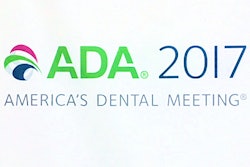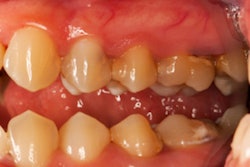
Is avoiding periodontal disease as easy as telling your patients to eat more yogurt? Of course not, but a new study found that those who ate more yogurt were indeed less likely to have periodontal disease.
In a study of more than 6,000 Korean adults, researchers found that patients who ate less yogurt were more at risk for periodontal disease. However, the exact mechanism of how yogurt helps was not answered, as the researchers also reported that neither less intake of milk nor lower intake of calcium was significantly associated with periodontitis.
"Periodonitis was significantly associated with the less intake of yogurt among the Korean adults, but the calcium contained in yogurt is not likely to cause it," the study authors wrote PLOS One (October 30, 2017).
The lead study author was Hye-Sung Kim of the Oral Health Science Research Center at the Apple Tree Dental Hospital in Goyang, South Korea.
Survey says
Periodontitis is a chronic inflammatory disease that can lead to the destruction of the connective tissue and alveolar bone around teeth. As it has many possible causes, the researchers wanted to find out if a lower level of calcium intake and less intake of yogurt or milk were among them.
Data for their observational study came from the 2009 Korea National Health and Nutrition Examination Survey of more than 6,000 adults age 19 or older who underwent a periodontal examination and took a nutrition survey. The frequency of yogurt and milk intake was gathered with a food frequency questionnaire. The amount of calcium intake was calculated with dietary intakes data from one-day 24-hour recall interviews.
The researchers assessed periodontitis using the Community Periodontal Index and defined it as greater than or equal to "code 3," which indicates that at least one site had a probing pocket depth of greater than 3.5 mm (a pocket depth of greater than 5.5 mm is considered code 4). The study included teeth #11, 16, 17, 26, 27, 31, 36, 37, 46, and 47.
Trained nutritionists conducted nutrition surveys at the participants' home. The researchers also collected data on sociodemographic variables, including gender, age, household income and education level, frequency of toothbrushing, use of dental floss or an interdental brush, and smoking status.
The data revealed that patients who ate less yogurt were more likely to have periodontal disease (95% confidential interval [CI]: 0.70-0.97). However, the researchers also reported that neither less intake of milk (95% CI: 0.89-1.20) nor lower intake of calcium (95% CI: 0.89-1.21) was significantly associated with periodontitis. They found no difference in the association of yogurt intake with periodontitis associated with age, gender, and smoking.
The study authors noted several limitations beyond this being an observational study:
- The intake level of calcium can be only estimated by the Korean dietary reference intakes. Using biochemical values would reflect the participant's calcium status more accurately, the authors noted.
- Periodontitis was assessed using the Community Periodontal Index, which may over- or underestimate periodontal status.
- The researchers were not able to consider patients' systemic conditions, such as gastrointestinal disease and malabsorption, which may affect the intake of dairy foods.
- The researchers were unable to determine the direction of causal-relationship between yogurt intake and periodontitis since the study was cross-sectional.
Probiotics and periodontitis
This study indicates that probiotics may help in the fight against periodontitis, according to American Academy of Periodontology President Steven R. Daniel, DDS.
“Participants who ate yogurt less than once a week were found to have greater incidence of periodontitis than participants who ate yogurt more frequently.”
"The findings suggest that probiotics -- often found in yogurt -- may inhibit the growth of the bacteria that trigger periodontal disease," he told DrBicuspid.com.
While a 2008 Journal of Periodontology study (January 2008, Vol. 79:1, pp. 131-137) supported this idea, conclusive evidence regarding the dietary impact on periodontal health is still building, but this study does link the infrequent intake of yogurt to poor periodontal health, he noted.
"Participants who ate yogurt less than once a week were found to have greater incidence of periodontitis than participants who ate yogurt more frequently," he stated. "However, the study demonstrates that the infrequent intake of milk and calcium does not have a significant association to periodontitis."
But this study may suggest future research directions, according to Dr. Daniel.
"A possible future research direction based on this study may be to investigate how components (such as probiotic strains and acidity levels) of certain foods may influence bacterial development and/or inflammatory response," he noted.
He suggested this and other studies may lead to a greater understanding of how food can affect periodontal health.
"As a critical mass of literature builds over time, it is possible that periodontists and their patients may gain insight on how dietary choices affect the health of the gums and supporting structures of the mouth," Dr. Daniels concluded.



















